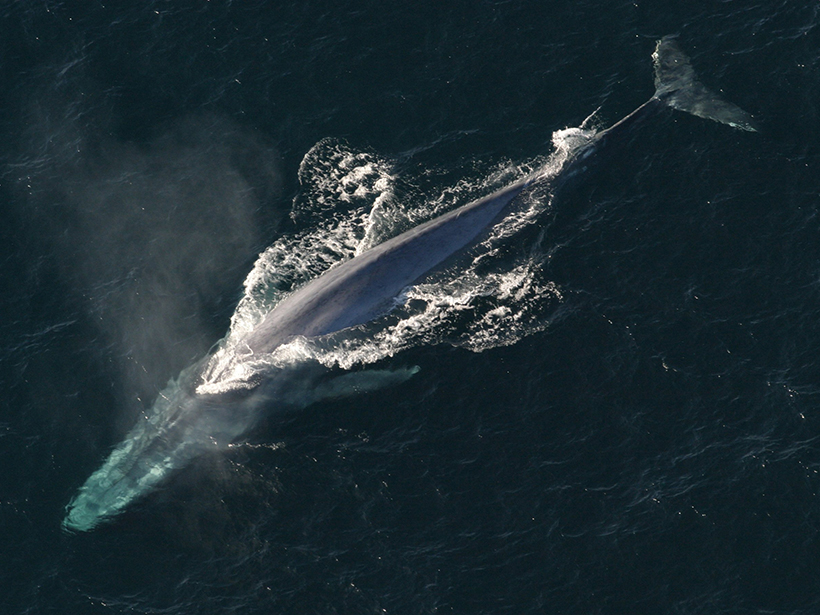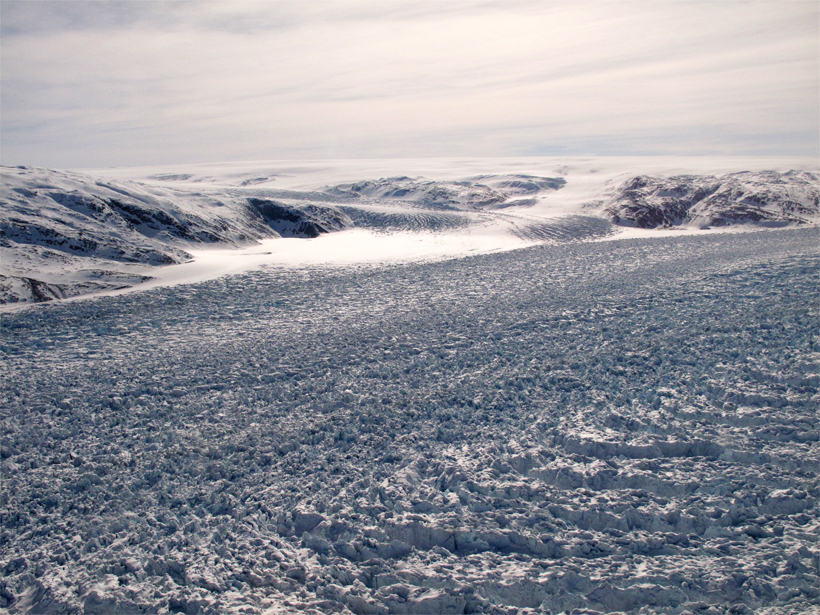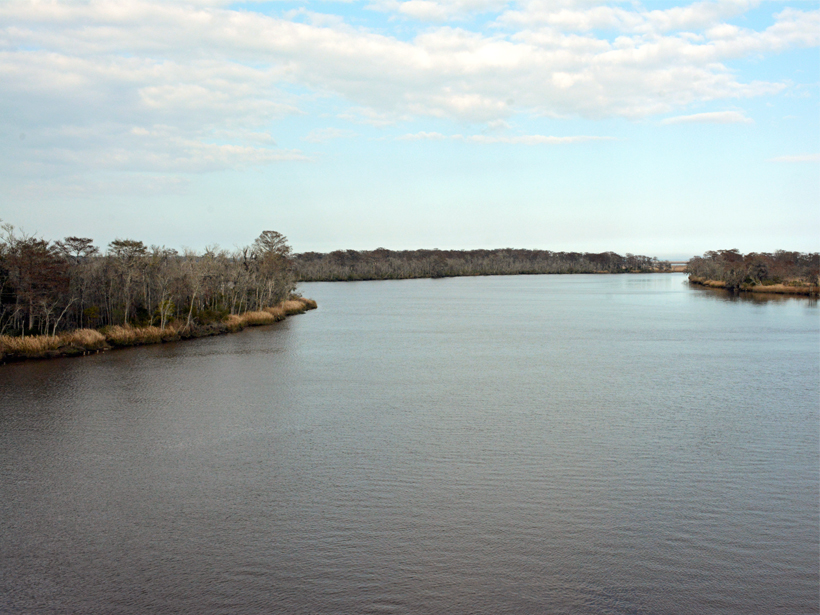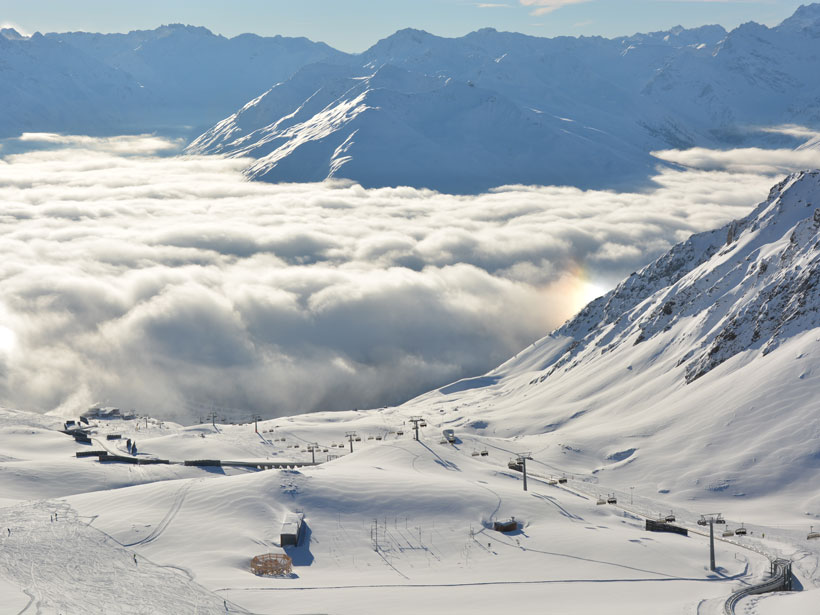In recent decades, there have been more intense North Atlantic hurricanes. A new study compares climate models to see whether they can attribute increasing potential intensity to human activity.
Research Spotlights
Research spotlights are plain-language summaries of recent articles published in AGU’s suite of 24 journals.
Seasonal and Annual Changes in Pitch in Blue Whale Calls
Six years of acoustic recordings detect seasonal shifts in blue whale vocalizations that correlate with the presence of icebergs, a primary source of ambient ocean noise in the southern Indian Ocean.
Modeling the Subsurface Hydrology of the Greenland Ice Sheet
Firn aquifers—pockets of meltwater beneath the surface of an ice sheet—could have far-reaching impacts on subglacial hydrology, a new study finds.
Tracking Dissolved Organic Matter in Coastal Ecosystems
Dissolved organic matter supports aquatic food webs and holds as much carbon as the atmosphere. A new study tracks which sources and processes play the biggest role in coastal systems.
Variations in Creep Along One of Earth’s Most Active Faults
Satellite-based radar images of motion along Turkey’s North Anatolian Fault are helping scientists understand when, where, and how creep occurs and its implications for seismic hazard.
Using GPS Sensors to Capture Key Snowpack Properties
A low-cost, two-antenna GPS setup could enable valuable snow measurements in remote locations, improving predictions of runoff and avalanche risk.
The Tropical Atmosphere’s Balancing Act
A new study finds that the tropical atmosphere maintains radiative-convective equilibrium as a whole, but not at smaller scales.
Mountain Ecosystems and Communities Face Challenges Worldwide
An unprecedented global assessment examines climate, economic, and governance threats to mountain systems and the benefits they provide, suggesting pathways toward sustainability.
Sea Level Rise May Reactivate Growth of Some Reef Islands
Reconstruction of reef island formation in the Maldives suggests the possibility that not all islands will shrink as climate change progresses.
Missing Lakes Under Antarctic Ice Sheets
New radio sounding study finds little evidence of lakes under Antarctica’s Recovery Glacier.










